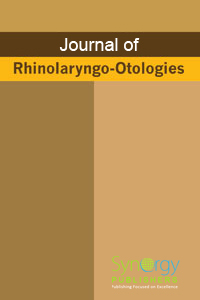
Rhinolight® – An Alternative to Allergic Rhinitis Therapy or Supportive Care? Pages 22-26
O. Wojas1, B. Samoliński1, K. Furmańczyk2, D. Dziewa-Dawidczyk2 and E. Krzych-Fałta1
1Department of the Environmental Hazards Prevention and Allergology Faculty of Health Sciences Medical University of Warsaw, Poland; 2Chair of Applied Mathematics, Faculty of Applied Informatics and Mathematics, Warsaw University of Life Sciences (SGGW), Poland
DOI: https://doi.org/10.12970/2308-7978.2019.07.05
Download PDFAbstract: Introduction: A review of the literature shows that intranasal phototherapy seems to be an important part of allergic rhinitis therapy. The main aim of this study was an attempt to evaluate the effectiveness of allergic rhinitis therapy based on UV radiation (UVA and UVB beams). The subjects in the study were 8 patients (5 women and 3 men) diagnosed with chronic allergic rhinitis. The research method was Rhinolight®, a device that emits a beam of visible light (85%): UVA: below 10% and UVB: below 3%. The effectiveness of the therapy was measured using a Peak Nasal Inspiratory Flow (PNIF) meter and evaluated on the basis of subjective complaints measured on a point scale.
Results: An evaluation of subjective complaints using a point scale showed a statistically significant (p<0.05) improvement in nasal patency, reduced itching sensation and a smaller quantity of water discharge as a result of the phototherapy. An objective evaluation at the end of the therapy revealed significant improvement in nasal cavity patency compared to the situation before the phototherapy.
Conclusions: Phototherapy may be considered as a supportive method in the treatment of allergic rhinitis.
Keywords: Allergic rhinitis, allergic rhinitis therapy, rhinolight. Read more

